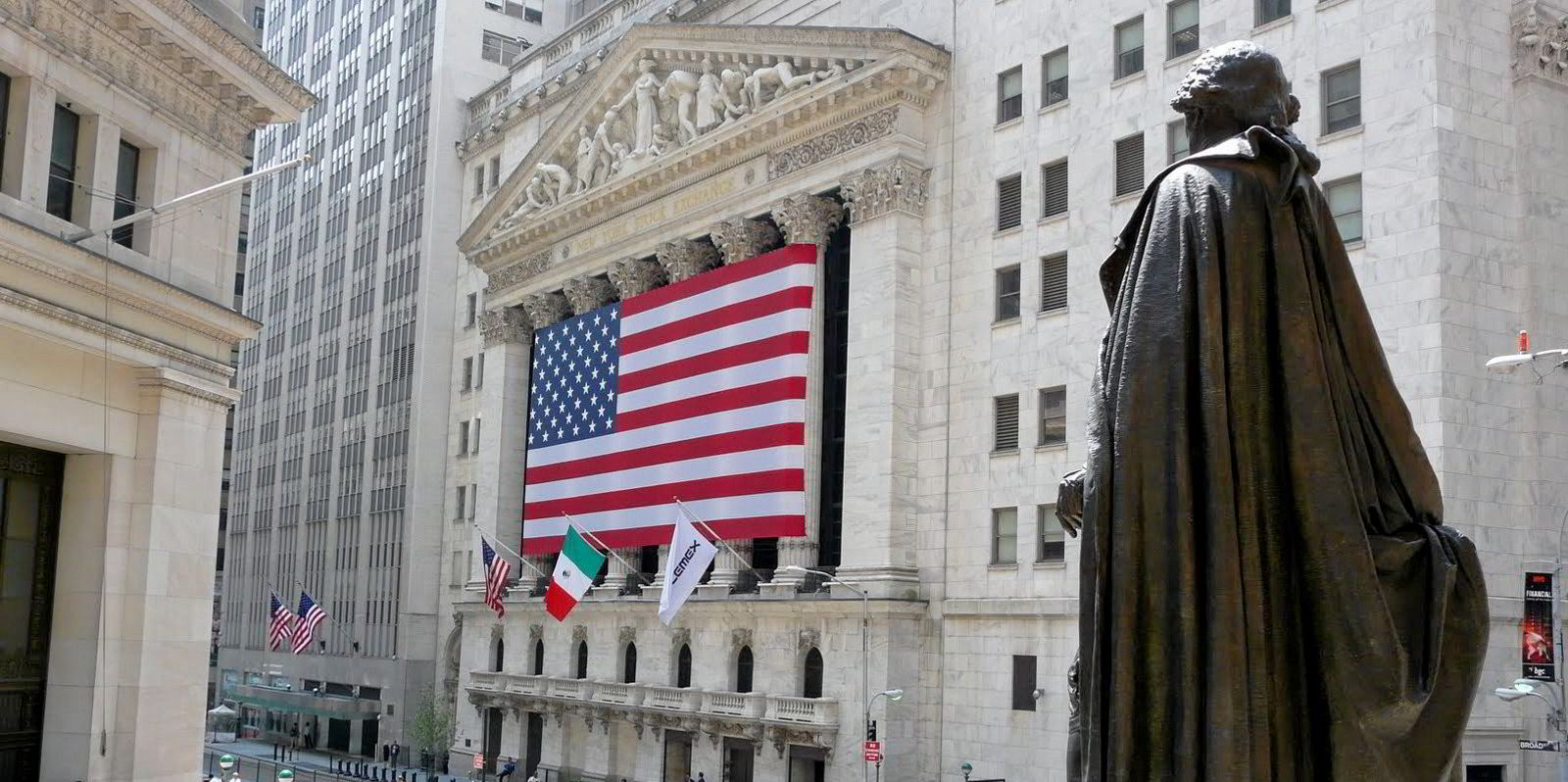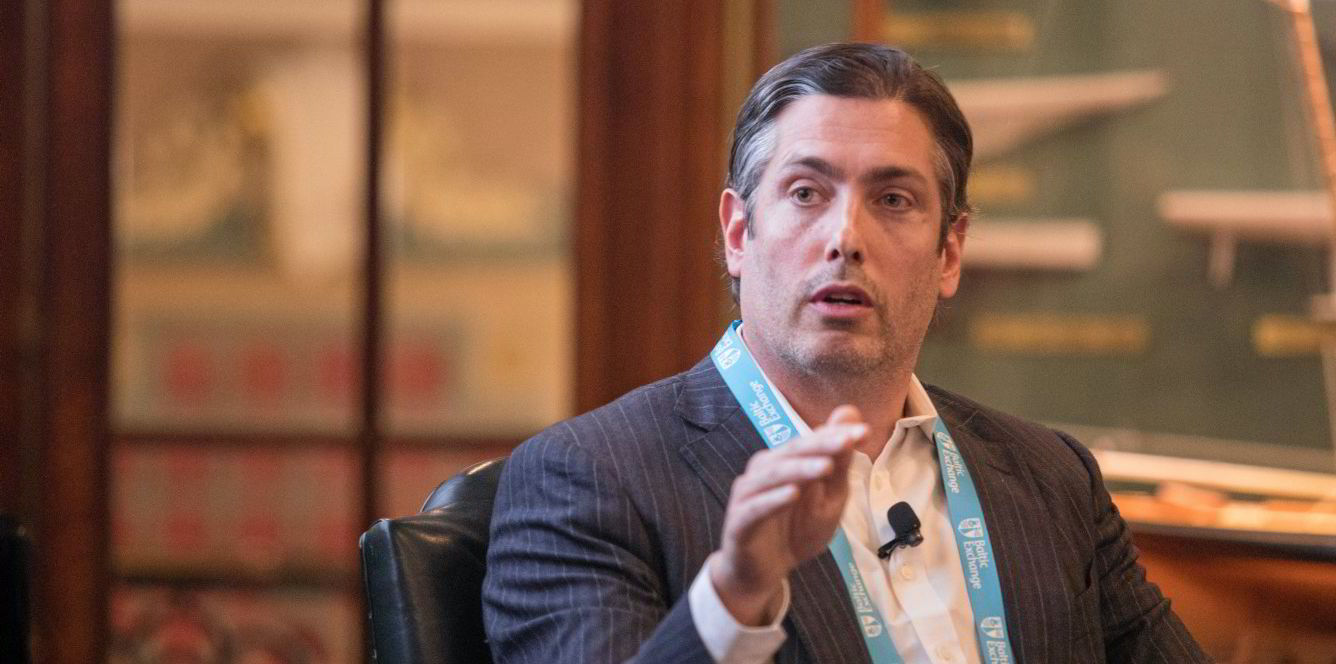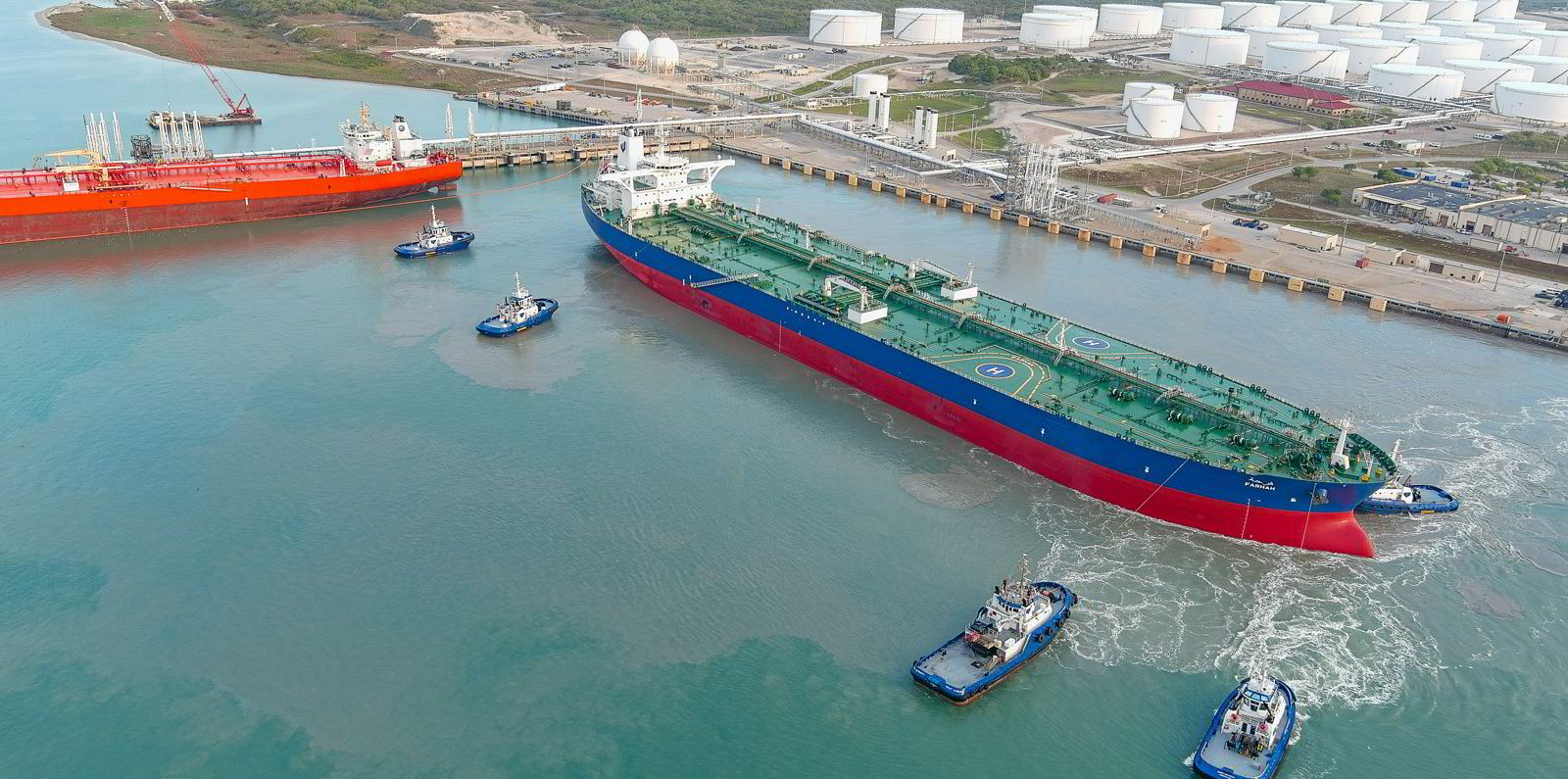Retail investors will be able to invest in wet freight derivatives from Wednesday, when the first ever tanker-focused exchange-traded fund (ETF) lists on the New York Stock Exchange.
The Breakwave Tanker Shipping ETF — which will trade under ticker symbol BWET — is managed by Breakwave Advisors and focuses on the VLCC segment.
John Kartsonas, founder and managing partner of Breakwave, told TradeWinds that the ETF is an opportunity for investors to make gains from increases in tanker rates via the freight futures market.
The tanker ETF will sit alongside Breakwave’s bulker-focused ETF, listed on the New York Stock Exchange as BDRY, which has just celebrated its fifth birthday. The dry fund today has $82.5m of assets under management.
“The idea is the same — providing investors access to freight futures for tankers, the same way we did for dry bulk,” Kartsonas said.
Breakwave chose VLCCs because they are the most well-known tanker segment with the most widely known business, transporting crude oil.
“We think it’s very timely because, obviously, this market has awakened after many, many years of being kind of quiet and, to be honest, the last six months have proven to be quite volatile,” he said.
“If you were at the right place at the right time, whether you were investing in tanker stocks or a product like [the wet ETF] ... you would have actually generated very, very strong returns.”
Freight derivatives for VLCCs are the most liquid and traded for wet FFAs, particularly the route for the Middle East to Asia, on which the ETF will focus.
The ETF will focus on near-term contracts in order to track the spot market as closely as possible, Kartsonas said. The initial freight futures allocation will be 90% VLCC contracts and 10% suezmax contracts, rebalancing annually.
Spot correlation
“The average duration of the futures is around three months and that will provide a very good correlation to the spot market. It’s not perfect because obviously you cannot buy on the spot market. There’s no instrument,” he said.
The effects of rolling contracts are mitigated by using a “laddered” strategy, progressively increasing the fund’s position to the next calendar quarter while existing positions are maintained and settled in cash.

Liquidity in tanker FFAs pales in comparison with dry freight derivatives, but Kartsonas said this is not such a big concern, given that the fund does not actively trade in and out of contracts.
“Of course, we need to trade and we need to buy contracts when there is inflows or we have to sell contracts when there are outflows. But given that we have a lot of experience with the dry [ETF] over the last five years, we’ve back-tested that extensively — and we actually went even higher in terms of the risk and we don't see any issue in like that market,” he explained.
The wet ETF will bring more liquidity to the VLCC freight derivatives market over time.
“We expect to bring more liquid to this market because we are an institutional fund, we will be trading this market so liquidity — by default, because we are involved — is going to increase and that’s good for everyone,” he said.
“It’s good for us; good for the overall tanker market, it’s good for the participants, majors, whoever wants to hedge. It’s a very good, very good thing for the market.”
The success of the dry-bulk ETF to date has given Breakwave confidence in its concept, Kartsonas told TradeWinds.
“Over time, especially after Covid, they [investors] understand that this market can be very, very productive and you can provide a lot of good returns for investors,” he said.
“You have to be — obviously — a person who can handle volatility, but once you get over that, this market can provide very strong returns.”
Tankers are much better understood than the dry-bulk sector, which Kartsonas thinks should make the ETF an easier sell to investors.
“We’re not trying to compete with stocks,” Kartsonas said.
“This is an additional, different tool to participate in the tanker market. When you invest in a company, you’re not only investing in the rates, you might invest in management, you might invest in regulation, you might invest in a broader macro theme. Sometimes stocks will follow rates, sometimes they don’t.
“For example, right now, in the last week, rates have come down pretty dramatically and the stocks have not. That doesn’t mean that stocks are wrong or the market is wrong — who knows what’s going to happen in the future? — but sometimes it does correlate and sometimes it doesn’t.”
The wet ETF has a seeder in place and so will have at least one initial investor in place when it lists on the NYSE. This will provide the foundation for the ETF to grow its assets as more investors buy into the fund.
“It’s an open-end device with an open end fund so it takes time,” Kartsonas said.
“At the end of the day, it’s a publicly traded product, it’s easy to buy and sell like a stock. So why would you commit to something else that doesn't have the same volatility when you can trade this product?” he said.
Kartsonas told TradeWinds there are certain metrics that can be used to gauge investor appetite for investing in FFA-focused ETFs.
First of all, there are the sheer number of investors. The dry-bulk ETF had almost 50,000 at the end of 2022, according to the latest data available, he said.
Then there is the fact that trading volumes for Breakwave's dry ETF often exceed those for dry-bulk stocks, he added.
“Right now, we’re almost at around $100m in AUM [assets under management], which for an ETF is a low number, but for the niche segment we are focusing [on], we think it's quite good,” he said.
“We think we can grow that but for now to have all these thousands of investors, to have the AUM and the trading volume means there is a market for that.”
The fact that tankers are, broadly speaking, more widely understood than bulkers means that the wet ETF has great potential, Kartsonas added.
“We are optimistic that the wet [ETF], over time, will match and exceed basically these numbers in the next few years,” he said.




